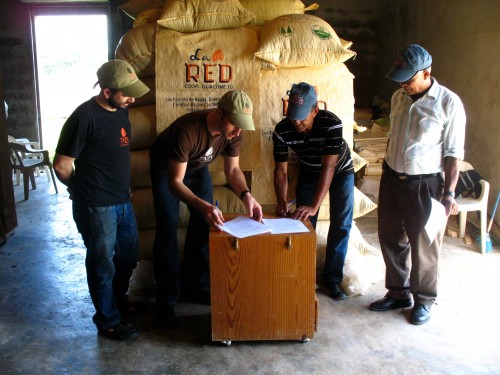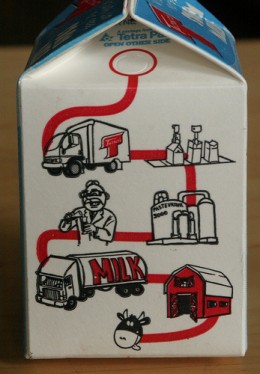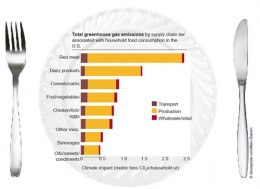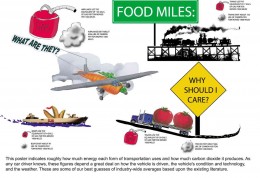By Danielle Kennedy
This article is the second in a 2-part series on the argument against buying local. Read the first part here.
So often in the Buy Local movement, we hear talk about “food miles,” but what about “fair miles?” The concept of fair miles refers to the idea that our purchasing power significantly affects the developing world. Some consumers argue that we should be supporting farmers in poorer countries as opposed to our own small local farmers. While we absolutely should be conscious of the fragile situations of workers in such countries, we must take that conclusion with a grain of salt.
As I pointed out in Part 1 of this series on sustainability in the local movement, it is impossible to make your purchasing decisions based on a singular factor. Does buying local actually take money away from farmers in developing countries? The answer is yes and no. On one hand, one could argue (and many do) that a paying job, regardless of the treatment of employees, is better than no job. After all, these workers need to feed their families somehow, right? But it is just this kind of thinking that perpetuates the unethical treatment and compensation of workers overseas by big corporations.
Many poor nations were not so poor some years ago. In the pre-globalized economy, long before European imperialism and banana republics, these now “third world” countries once thrived. Although formal colonies are no more, centuries of faulty and self-serving trade practices have culminated in a system in which powerful countries still exploit the developing world by coercing them to grow and export the crops we want them to. Without farmers producing a varied diet to feed the population, it’s no wonder these countries don’t have food security.
It doesn’t make sense that we would encourage the very practices within less fortunate countries that have decimated many of our own small farms. Our own farmers struggle, relying on government subsidies, while we buy crops that we can and do produce here from overseas. Even so, our country is much better off, so we donate our money to feed hungry souls internationally. But as the old saying goes: “Give a man a fish, and he’ll eat for a day. Teach him to fish, and he’ll eat for the rest of his life.” It is clear that we cannot feed the world through charity alone, and at the rate we are using up farmland with unsustainable farming methods, we won’t even have the option.
The local movement does not limit us to achieving a prosperous, sustainable economy for just our own locality – of course no one would come of any better in the end of that scenario. For a strong local economy here, we must encourage a strong local economy everywhere. Many in the developing world have realized the faults in the system, and instead of subjecting themselves to the whims of multinational conglomerates, they are creating their own chances at a flourishing future and climbing out of poverty. For example, the 1980s microcredit experiment, pioneered by Muhammad Yunus of the Grameen Bank in Bangladesh, has allowed countless borrowers to create small local businesses, many in rural communities, that simultaneously address issues of empowerment of the poor, job growth, and creation of previously unavailable services, such as in the health and educational capacities.
When given the opportunity, those stuck in poverty can stimulate their own job creation and attain food security. But developing countries cannot turn themselves around as long as powerful nations continue to keep them down by supporting unethical business practices. We must do away with the fantasy that we are sustaining these countries, when in fact we are causing their demise, as well as that of our own small and local businesses. Instead of taking advantage, we should be encouraging a varied crop output instead of the few that suit our needs. This way, crop rotation can improve soil conditions, and producers who rely on agriculture for their incomes can feed their fellow citizens and still export items with a low regional demand.

Taza Chocolate and La Red Guaconejo signing their first Direct Trade Agreement, May 3,2010 via tazachocolate.com
Buying local doesn’t necessarily always mean buying goods that were completely produced locally. There are many products that we CAN’T produce here, such as coffee and bananas. But that doesn’t mean we have to go without. There are countless local businesses that you can still support by buying their nonlocal goods. Local sensation Taza Chocolate obviously can’t grow cacao beans in a harsh New England climate. But as a small, independently-run business, Taza better has the means to make sure their ingredients come from an organic, fair trade source, and they can effect sustainable methods like carbon neutral shipping. A small business like Taza can tell you about the farmers and their practices due to direct relations. Taza knows every inch of the production process because they are involved in each step – making that 70% stone ground dark chocolate bar taste all the more delicious.
In the end, we must understand that we don’t always have the option to buy local and that buying local is one part of a bigger picture. SLF’s mantra is not “Buy local or die” – we encourage you to buy local when you can, when it makes sense. There’s a reason that the issues of organic and fair-trade always seem to enter the conversation about local and cause confusion. It’s because these issues are all interconnected in ways that may not always be immediately apparent. So buy local first. But also buy green, buy healthy, buy fair – and most importantly, buy with a conscience.












